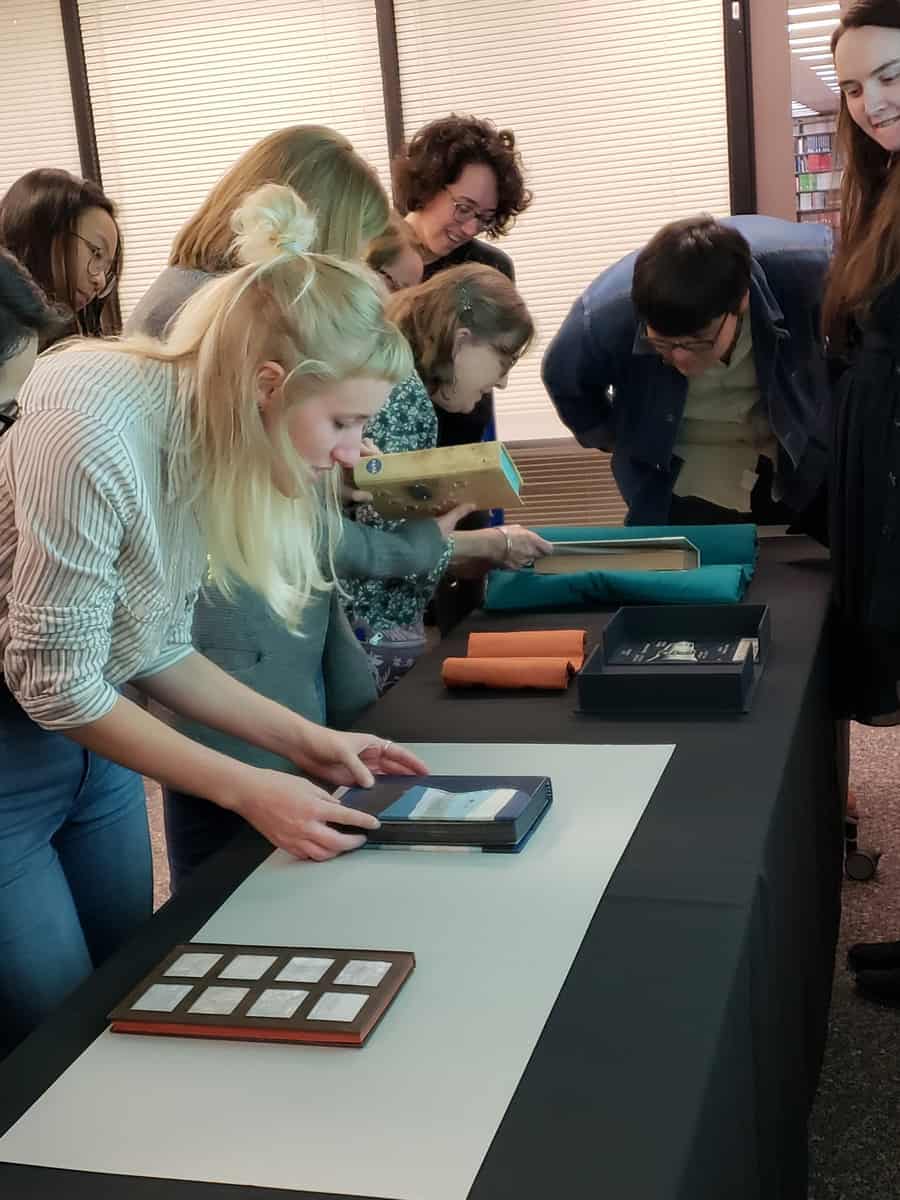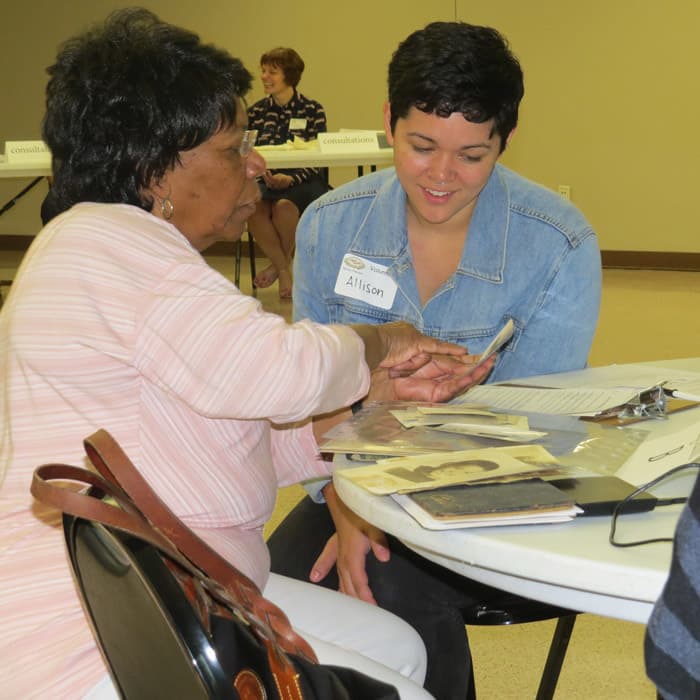Last week the University of Iowa Library’s Preservation and Conservation Department were please to host Dartmouth College’s Collections Conservator Deborah Howe as part of the William Anthony Endowment lecture series. On Thursday, October 4th Howe gave a lecture at the Main Library titled Old Books, New Books, and In Between Books: a Brief Look atContinue reading “Deborah Howe visits as part of the William Anthony Endowment”
Category Archives: Grants, outside funding
If Objects Could Talk History Harvest at the African American Museum of Iowa
In higher education, we often equate student life and campus life. Last year, I found myself questioning this notion on my frequent shortcuts through the student center on campus. Absent from most of the archival photos hung in the student center’s hallway chronicling milestones in the building’s history are black students. Student life does notContinue reading “If Objects Could Talk History Harvest at the African American Museum of Iowa”
Preservation & Conservation Welcomes New Hires
Thursday, September 18, 2014 The UI Libraries Preservation & Conservation department would like to welcome two new(ish) staff members, Justin Baumgartner and Elizabeth Stone. They join us as members of the Keith/Albee project team. They will be working together, along with other UI Libraries staff, to stabilize and digitize the Keith/Albee collection. Both Justin andContinue reading “Preservation & Conservation Welcomes New Hires”
Iowa Collections Emergency Response Team Training
Thursday, August 21, 2014 Yesterday twenty-five individuals from around Iowa gathered at the Camp Dodge Gold Star Military Museum in Johnston to begin training as a member of the Iowa Collections Emergency Response Team (Iowa CERT). Many of Iowa’s documentary collections are scattered in museums and libraries throughout the state. These diverse collections together formContinue reading “Iowa Collections Emergency Response Team Training”
UI Libraries receives Carver grant to renovate exhibition space
Tuesday, May 6, 2014 In April, the University of Iowa Libraries was awarded $500,000 by the Roy J. Carver Charitable Trust in support of the renovation of the Main Library Exhibition Space. Very exciting news! Our current space was constructed in 1951 and has not changed much since then. Over the years, using the spaceContinue reading “UI Libraries receives Carver grant to renovate exhibition space”
UI Libraries receives NEH $300,000 three-year grant
We are pleased to announce that the UI Libraries has received a National Endowment of Humanities (NEH) $300,000 grant award for a three-year preservation and access project to provide conservation treatment and to digitize 150 oversize scrapbooks in the Keith/Albee Vaudeville Theater Collection. Since its acquisition in 1976, the Keith/Albee Vaudeville Theater Collection has remainedContinue reading “UI Libraries receives NEH $300,000 three-year grant”
An Ailing Herbal Comes to Conservation Lab
This book first came to the attention of Martin Rare Book Librarian Donna Hirst when a patron requested to see some of the herbals in the collection. The poor book had been overlooked, though at one time it appears to have seen a lot if use. Or maybe just a lot of neglect. Donna HirstContinue reading “An Ailing Herbal Comes to Conservation Lab”

